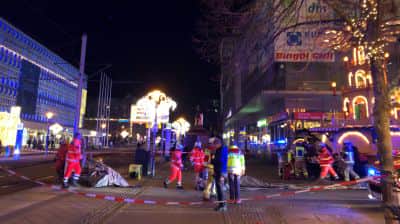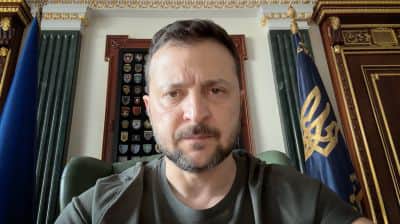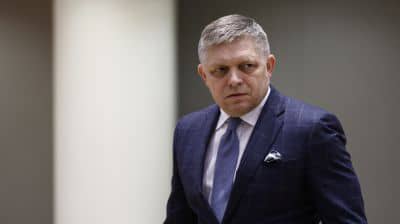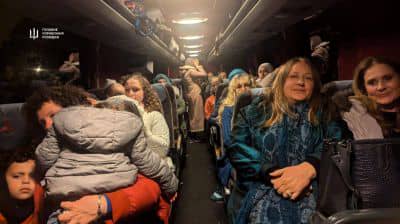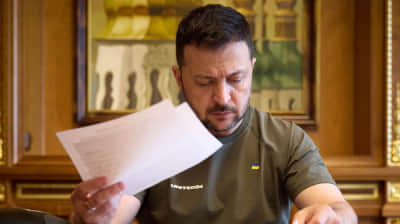Die Welt publishes peace deal Ukraine and Russia could have signed in April 2022
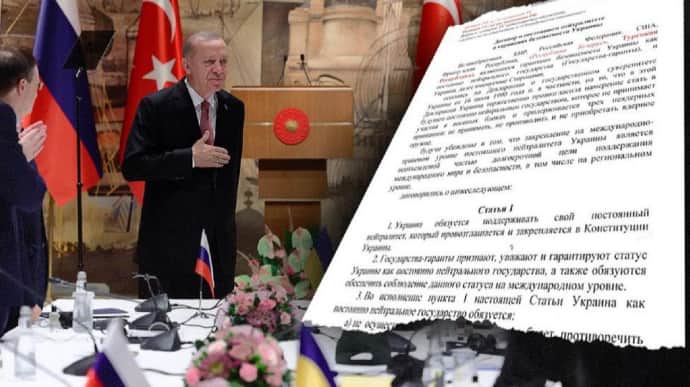
Die Welt, a German media outlet, has stated that a peace agreement could have been signed a few weeks after the start of Russia's invasion of Ukraine. The conditions for ending the war then were spelled out in a 17-page draft agreement that the parties agreed on on 15 April 2022. Russia demanded neutrality from Ukraine, and a limit on the number of troops, weapons, equipment and aircraft. The then-occupied territories were to remain with Russia.
Source: Die Welt with reference to the document at their disposal
Details: Only a few points remained unagreed upon, and they were supposed to be discussed personally by Russian leader Vladimir Putin and Ukrainian President Volodymyr Zelenskyy at a summit, but this never happened.
Die Welt noted that immediately after the start of the full-scale war, the Russian and Ukrainian sides began negotiations to end combat actions. Moscow tried to force Kyiv to surrender at the negotiating table.
In this treaty, Ukraine pledged to maintain "permanent neutrality". By doing so, Kyiv renounced any membership in military alliances. Thus, the country's accession to NATO would have been ruled out.
Ukraine agreed to never "receive, produce or acquire" nuclear weapons, to not allow foreign weapons and troops into the country, and to not grant access to its military infrastructure, including airfields and seaports, to any other country.
In addition, Kyiv had to refrain from conducting military exercises with foreign participation and from participating in any military conflicts. According to Article 3 of the document, nothing explicitly prevented Kyiv from becoming a member of the EU.
In response, Russia promised not to attack Ukraine again. To give Kyiv this assurance, Moscow agreed that the five permanent members of the UN Security Council, which are the United States, the United Kingdom, France, China and Russia itself, could provide Ukraine with comprehensive security guarantees. In Article 5 of the draft treaty, Kyiv and Moscow agreed on a mechanism reminiscent of NATO's assistance provisions.
In the event of an "armed attack on Ukraine", the guarantor countries would be obliged to provide Kyiv with support in its right to self-defence, enshrined in the UN Charter, within a maximum of three days. This assistance could be provided through "joint action" of all or some of the guarantors' powers. The treaty had to be ratified by each signatory state in accordance with international law.
Thus, the two sides developed a mechanism that differs significantly from the 1994 Budapest Memorandum. At that time, Russia had already assured Ukraine of its territorial integrity. Western states promised Kyiv support in case of an attack but did not guarantee it.
However, the security guarantees being considered in the spring of 2022 would have required the approval of the United States, China, the United Kingdom and France in a second phase. Russia also wanted to include Belarus, and Kyiv wanted to include Türkiye. However, the first goal of the negotiators was to create unity between Kyiv and Moscow so that the text could be used as a basis for multilateral negotiations.
Crimea and the port of Sevastopol were to be excluded from security guarantees. By doing so, Kyiv was practically handing over control of the peninsula to Russia.
It is not clear from the document which part of Ukraine’s east was to be excluded from the guarantor states' promise. The relevant areas were marked in red. In the Istanbul communiqué, Kyiv supposedly agreed to exclude parts of Donetsk and Luhansk oblasts that Russia had already occupied before the full-scale war. The Russian delegation, on the other hand, insisted that the borders be determined personally by Putin and Zelenskyy and marked on a map. The Ukrainian delegation rejected this option.
Russia demanded that in the event of an attack, all guarantor states would have to give consent to activate the assistance mechanism. This would have given Moscow a veto to override the defence mechanism. In addition, Moscow rejected Ukraine’s demand that the guarantor states could establish a no-fly zone over Ukraine in the event of an attack.
During the talks, Russia signalled its readiness to withdraw from Ukraine, but not from Crimea and the part of Donbas that was to be excluded from security guarantees. Putin and Zelenskyy were to discuss the details of the withdrawal directly. This was confirmed to Die Welt by two members of the Ukrainian negotiation delegation independently of each other.
The issue of the size of the Ukrainian army in the future also remained unresolved. Kyiv partially responded to Russia's demands for demilitarisation. Moscow demanded that the Ukrainian army be reduced to 85,000 soldiers, and currently, there are about a million servicemen. Ukraine proposed the number of 250,000 soldiers.
Opinions also differed on the number of military equipment. Russia demanded that the number of tanks be reduced to 342, while Kyiv wanted to keep it at 800. Ukraine wanted to reduce the number of armoured vehicles to 2,400, while Russia demanded that only 1,029 be left.
There was also a big difference in the numbers of artillery pieces. Moscow planned to allow Ukraine to keep 519, while Kyiv wanted 1,900. Kyiv wanted to retain 600 multiple-launch rocket systems with a range of up to 280 kilometres, while Russia wanted 96 pieces with a maximum range of 40 kilometres. Russia wanted to reduce the number of mortars to 147 and anti-tank missiles to 333, while Kyiv insisted that the number be reduced to 1,080 and 2,000 respectively.
In addition, Russia demanded the destruction of Ukrainian aircraft. Moscow demanded that 102 fighters and 35 helicopters be left, while Kyiv insisted on 160 jets and 144 helicopters. According to Russian ideas, there should be two warships, while according to Ukrainian ideas, there should be eight of them.
Die Welt stressed that the draft treaty shows how close Ukraine and Russia were to a possible peace deal in April 2022. But after the promising summit in Istanbul, Moscow put forward the following demands, which Kyiv did not agree to.
Thus, Russia demanded that Ukraine make Russian the second state language, lift mutual sanctions and stop lawsuits in international courts. Kyiv also had to ban "fascism, Nazism and aggressive nationalism" in Ukraine.
As Welt learned from several diplomats involved in the negotiations, there was great interest in the agreement in the spring of 2022. After the failure of its offensive on Kyiv, Russia withdrew from Ukraine’s north and announced that it wanted to focus on gaining territory in the east.
Die Welt quoted an unnamed member of the Ukrainian delegation as saying: "It was the best deal we could have had." Die Welt believes that even after more than two years of the full-scale war, the deal still looks favourable in retrospect.
Quote: "Ukraine has been on the defensive for several months now and has suffered heavy losses. Looking back, we can say that Ukraine was in a stronger negotiating position then than it is now. If the war had ended about two months after it started, it would have saved countless lives."
More details: At the time, negotiators predicted that Zelenskyy and Putin would sign the document in April 2022.
Die Welt writes that Davyd Arakhamiia, a member of the Ukrainian delegation, suggested in November 2023 why the leaders of the two countries had not met. The then UK Prime Minister Boris Johnson arrived in Kyiv on 9 April and said that London would "not sign anything" with Putin and that Ukraine should continue fighting. Later, Johnson rejected ever saying that. However, there are reasons to believe that the proposal to provide security guarantees to Ukraine in agreement with Russia failed at this stage.
Support UP or become our patron!
